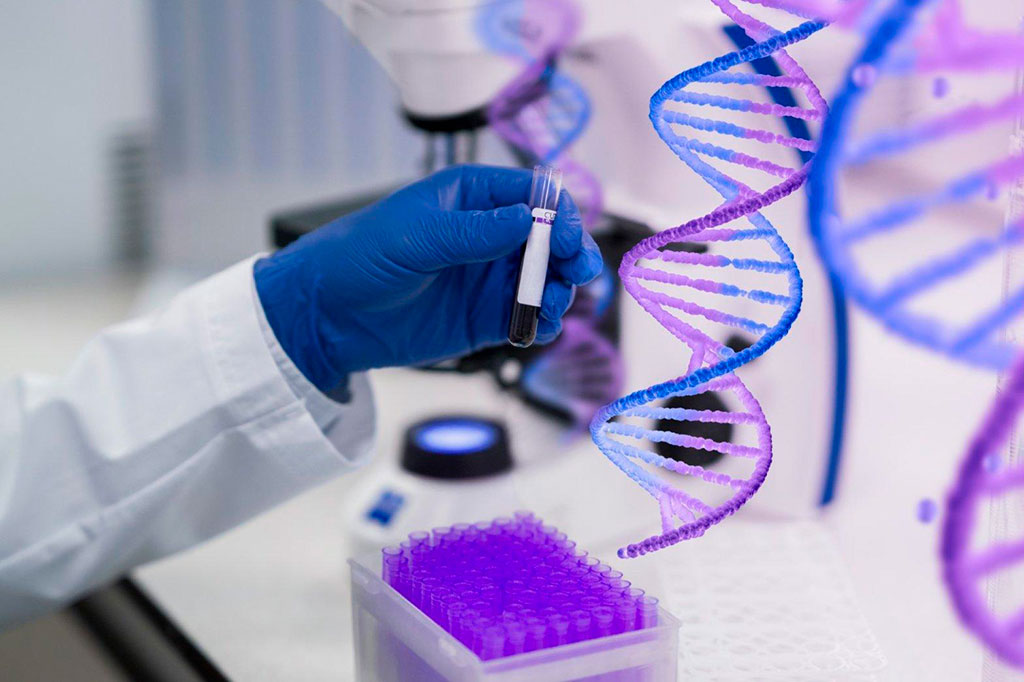Innovative DNA Sequencing Method to Enable Easier Testing and Earlier Cancer Detection
Posted on 16 Jun 2023
A new, precise, and efficient method of DNA sequencing that needs smaller DNA samples for testing could potentially pave the way for next-generation diagnostics.
Researchers from Penn Medicine (Philadelphia, PA, USA) have developed an innovative approach to map specific DNA markings known as 5-methylcytosine (5mC), which are crucial in gene regulation and play a significant role in health and illness. This novel methodology, named Direct Methylation Sequencing (DM-Seq), enables scientists to profile DNA using minimal samples and without damaging them, making it potentially applicable to liquid biopsies (testing for cancer markers in the bloodstream) and early cancer detection. In contrast to existing methods, it can also accurately identify 5mC without mistaking it for other common markings.

In addition to the primary bases of DNA (adenine, cytosine, guanine, and thymine), another layer of information exists in DNA modifications that dictate which genes are activated or deactivated in a given cell type. Among these modifications, 5mC is highly significant as it's the most common type in all mammals and is known for deactivating certain genes. These DNA modifications, including 5mC, work as epigenetic (reversible, environment-driven) controllers that modify the way DNA is read. The process of 5mC involves the attachment of a small atoms cluster called a methyl group to a specific site on cytosine, also known as the letter “C” in the four-letter DNA alphabet. This modification can inhibit the expression of adjacent DNA via both direct and indirect mechanisms.
The DNA deactivated by 5mC can include protein-encoding genes, which may not be suitable for expression in a specific cell type at a certain life stage, and virus-like elements in the DNA that must be continually suppressed. Not surprisingly, the abnormal absence or excess of 5mC can result in abnormal gene expression, potentially causing diseases like cancer. Certain abnormal 5mC patterns are viewed as indicative of some cancers, highlighting the need for a precise and specific 5mC mapping method. Traditional techniques for mapping 5mC use chemicals or enzymes that react differently to 5mC and unaltered cytosine, enabling distinction between the two. However, the conventional bisulfite sequencing (BS-Seq) method can severely damage DNA and fails to differentiate between 5mC and another important methylation type, 5-hydroxymethylcytosine (5hmC). Even newer methods have limitations, including the need for large DNA quantities.
The new DM-Seq technique uses two enzymes capable of modifying DNA: a designer DNA methyltransferase and a DNA deaminase. These enzymes can detect 5mC directly and specifically and are sensitive enough to be done with nanogram amounts of DNA, making the method suitable for liquid biopsy applications. The team demonstrated the effectiveness of DM-Seq on glioblastoma-type brain tumor samples. Compared to traditional BS-Seq, DM-Seq was more effective at distinguishing 5mC from 5hmC at critical genomic sites, where methylation levels can predict patient outcomes. They also compared DM-Seq to a new, emerging 5mC-sequencing technique called TAPS, used in cancer diagnostics, revealing a previously unrecognized drawback in TAPS that reduces its 5mC-detection sensitivity.
“5mC can act as a fingerprint for cell identity, so it’s important for scientists to have the power to isolate 5mC and only 5mC,” said Rahul Kohli, MD, PhD, an associate professor of Biochemistry and Biophysics at Penn Medicine and a senior author of the study. “DM-Seq uses two enzymes to map 5mC and can be applied to sparse DNA samples which means it could be used, for example, in blood tests that look for DNA released into the blood from tumors or other diseases tissues.”
Related Links:
Penn Medicine








 (3) (1).png)
 assay.jpg)




